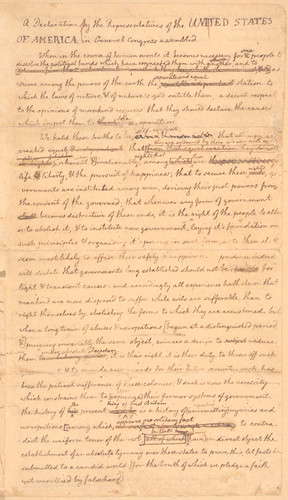I am a sick man. Well, maybe not as sick as the Underground Man in Dostoevsky's book. But my handwriting is pretty sick. Bad things happen when I write in cursive...

There are reasons for it, I suppose.
from children is precisely that it
is a demand. We put enough hurdles along the
course already. Several are unnecessary, although
rather high. - Hugo Kerr, From
the International Reading Association's Listserv
I like to give out the excuse that all of my fingers have been broken, many of them twice (which is true). But I was 14 or so when I broke them all the first time at a roller rink (my hands got run over by someone much bigger than me), and I think my penmanship was pretty awful already then. Probably it's my mother's fault; she should have beaten me for bringing home "D's" in penmanship in elementary school and, probably, I would have done better...
I think cursive doesn't really
serve a purpose except for signing
things.... Everything we read that is
published is in regular print
so why do we demand students
write in cursive? - Kate Rose, From
the International Reading Association's Listserv
Cursive has an interesting history in English. The Brits, I believe, call it "joined up writing." The word "cursive" is used for a flowing script style in a number of languages - not all of which use Roman letters.
When William Bradford penned the Mayflower Compact in 1620, most of his letters were disconnected. But they did look much like our current lettering.

Some one hundred and fifty years later, Thomas Jefferson's hand written rough draft of the Declaration of Independence showed most words as connected in a single flowing line. The signature of John Hancock still had a few breaks between letters within it.
 President Lincoln's handwriting looked little different than cursive script does today.
President Lincoln's handwriting looked little different than cursive script does today.In the 1960's a handful of academic publishers (like Zaner-Bloser and D'Nealian) made efforts to codify and simplify cursive. The effect was probably the opposite of what was intended; competing handwriting curriculums resulted in greater variation in handwriting in America.
That, so far, is a summary of Wikipedia's page on cursive. And if this were an academic article (instead of my personal blog) I'd feel compelled to cite them as a source.
write in cursive. I work with dyslexic children. Some
do much better with cursive; others need
to print. Thankfully, my tool
is now a computer and find that with this
population computers work best. - Diann LaRosa, From
the International Reading Association's Listserv
The thing I found most interesting was the changing nature of cursive, the very fact that our style and manner of writing has progressed and changed over time. The question, of course, is one of whether the time has come for more profound change.
If handwriting were intended as an art form that our culture really valued for its aesthetics, I'd be more supportive of it. Writing is an art form; but the art is literary, not visual. The art resides in the smithing of phrases and the choice of verbs and adjectives from a metaphorical palate that includes a rage of colors allowing for phrases ranging from pastel understatements like "his physical appearance lacked a certain degree of appeal" to full color hyperboles like "Bob owned hound dogs that were more handsome than he was." Certainly the lines must be legible to be meaningful; but as long as they are legible, it matters little whether they are written laboriously in fountain penned calligraphy or typed in MS Word in Edwardian Script ITC font. Both can be perfumed if inked on the right paper...
world. I for one combine printing and cursive
with a pattern long established but one I'm not
sure others could pick up on. - Cathy P. Miller, From
the International Reading Association's Listserv
In March of 2004 the American Federal of Teachers published an article entitled Is teaching cursive writing a waste of time?. Two teachers face off on the issue. The first argues that cursive no longer serves a purpose and should go the way of eight track tapes. The second says we will always need handwriting (but fails to explain why we can't just print) and that children need to learn to write cursive because they need to be able to read cursive. Her argument deteriorates into the aesthetic value of cursive (I don't think society places that much value on the aesthetics of actual writing anymore, though it places great value on layout and graphic design). And her concluding punch is that kids who can write well in cursive make her job easier because she can read their papers. I thought, "have the type or print them..."
high school, and I have been out for over 20
years now. I went back to print writing in
my junior year of high
school... Cursive should become like calligraphy,
a nice extra. - Karyn Zmuda, From
the International Reading Association's Listserv
CBS News has a rather dour story archived online from 2003. Penmanship: A Dying Art? almost bemoans the demise of penmanship and at times seems to belittle communication by email. That's as good a sign as any I'd say that penmanship really is a dying art.
use cursive anymore. Most of us tend
to print. It does need to be taught however. There
are many things that are
written in cursive, past and present. With
the many fonts to choose from on the computer
as well, it is important for everyone to be able to
read and write in
cursive. - Heidi Strander, From
the International Reading Association's Listserv
I suppose the thing that bothers me the most in all of this is that the discussion seems to be confined to the way we write - that is to say, to the way we move our hands when we put pen to paper. I don't think that is the real issue. While I agree that a handwritten note is more sentimental, I think that computers have made it easier to preserve our thought (and the words that go with them). In the information age, the percentage of our writing that has some personal sentiment attached to it (the kind that requires lavender colored stationary with little flowers on the edge) has declined considerably.
to write both ways, but prefer to
write in cursive. I can write faster that way, and it
seems like I make fewer mistakes. Logically, it seems
like cursive would be faster since the
letters flow together. - Priscilla Boersma, From
the International Reading Association's Listserv
The keyboard has changed the way I think. It has made my ideas more malleable. It has made writing a greater part of the process of developing my thoughts. With a pen in my hand and paper before me I write the beginning first, the middle second, and the end last. I begin with an outline of my thoughts and resist the urge to rearrange my ideas because that means starting over, with a fresh leaf of paper. But after years of working on a keyboard I often write the middle first and the beginning last, rearranging my thoughts repeatedly as I go. Paragraph four may actually end up as paragraph two; and when I'm done I can change then beginning or the end without starting over.
THE DAYS BEFORE COMPUTERS. We had to write
our papers in script, because that was the
professional, adult thing to do. A few
of us took typing lessons, but it wasn't required
in high school. That changed in college,
of course. So: maybe the schools need to keep up
with the times. Computers are
here to stay! - Beth Forrester, From
the International Reading Association's Listserv
 If the truth becomes clearer as I dwell on it, I can change what I'm saying before I publish it. That may not be impossible with a Bic, but it can be taxing. The keyboard has taken me from being a deductive writer (who starts with an unwavering conclusion to express) to being an inductive writer who uses the process of writing to manipulate his ideas and find his conclusions.
If the truth becomes clearer as I dwell on it, I can change what I'm saying before I publish it. That may not be impossible with a Bic, but it can be taxing. The keyboard has taken me from being a deductive writer (who starts with an unwavering conclusion to express) to being an inductive writer who uses the process of writing to manipulate his ideas and find his conclusions. Does the keyboard change the way my students think? Definitely. Incredibly. Is that good? I suppose that depends on the user. Students have to decide whether the keyboard helps them do more or helps them be lazy. Teachers have to identify cognitive skills that handwriting promoted (like thinking ahead) and find ways to promote those skills without the need to have a pencil in the student's hand.
Whether it's good or bad, the keyboard is here and it is not going away...


No comments:
Post a Comment